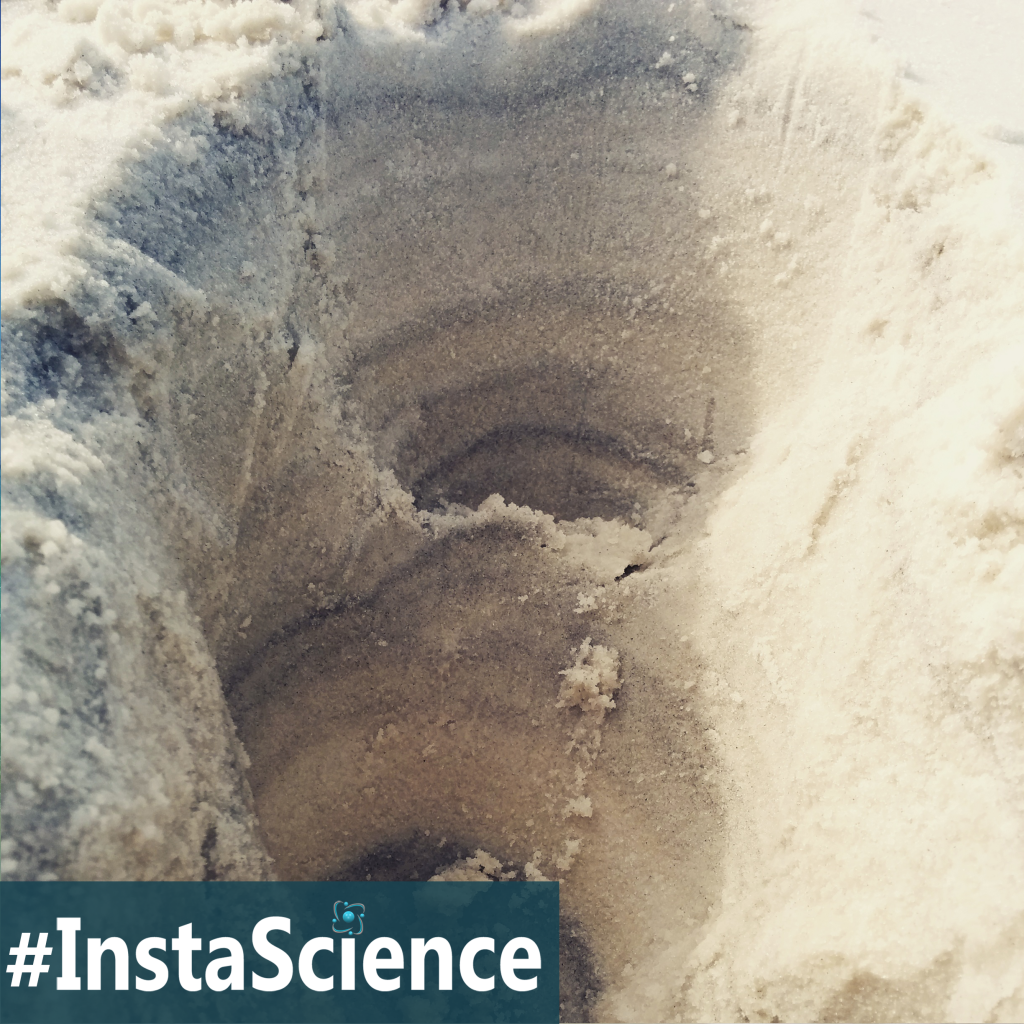
Have you ever noticed the different layers of sand when you dig a hole on the beach? Sand is composed of tiny grains of minerals, but did you know that some of these grains are heavier than others. Lightly-colored sand, which is composed mainly of quartz is lighter than darkly-colored sand, which has other minerals, like iron, in each grain.
The sand you see on the beach is constantly changing – some is being blown away by the wind, while more is being deposited by the waves. The movement of sand along the coast is called longshore transport. This transportation is always parallel to the shoreline, thanks to the angle of the breaking waves.
When there is a storm, the extra energy of the waves typically picks up more of the darkly-colored sand grains and brings them to the shore. So, when we look at the different layers of sand, we can see a glimpse into the history of the beach we are on!
Fun Fact – The origins of a sand grain can be predicted by examining it under a microscope – angular particles are typically created by glaciers, while round grains are typically created by the weathering of wind or water.
Related Science Activity
- Digging Layers – Grab a shovel and head outside. Have the students dig a hole in your yard and observe the layers in the dirt. When you are done, be sure to fill the hole back in!
Links to Research
- http://www.factmonster.com/dk/science/encyclopedia/rocks.html
- http://factsanddetails.com/world/cat52/sub331/item1188.html
- http://www.marinebio.net/marinescience/03ecology/sbprocesses.htm
- http://coastalcare.org/educate/exploring-the-sand/
 Sign up below to receive weekly tips & tools for homeschool science and we'll send you a FREE copy of
Sign up below to receive weekly tips & tools for homeschool science and we'll send you a FREE copy of